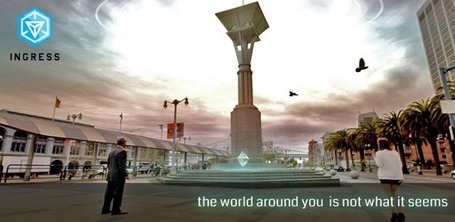
Unsurprisingly, these early adopters are keen to take advantage of everything that technology has to offer. Their key demands are summarized as ‘The 4 I’s': Immersion, Interactivity, Integration and Impact. Essentially, they want to be able to explore a story in greater depth, and have it reach out of the confines of a single medium and play out in ‘the real world’.
The people Latitude spoke to were very keen on ‘transmedia’ experiences – stories that are told over multiple formats (think TV dramas where characters have real-life social media profiles that help tell the story).

Great communicators leverage their message and story in one way or another to make a connection and compel change.
HOPEHIV’s Phil Wall inspired the audience at QlikTech’s annual meeting in January. Phil told his story. But his story wasn’t about him. It was about the orphans and vulnerable young people that his charity helps in Africa. It was about the people that do the helping and about the people that raise the money to help. The 1,100 attendees at that meeting were compelled to action.
Phil’s story had the three essential elements of compelling communication:
· A platform for change that resonated with the crowd.
· A vision of a brighter future to which everyone related.
· A call to action that people accepted.

FUNDING
Four to eight non-fiction projects will be accepted, each receiving $50,000 to $100,000 in funding. The projects must present a non-fiction story focused on social issues and include an integrated cross-platform or new media component designed to engage and activate audiences in imaginative ways. The fund will include peer support and expert mentorship for producers. Producers from the U.S. and internationally are invited to apply.
What’s
the wackiest thing you can imagine Google launching? How about a game to
fight for control of the minds of everyone on earth?
Or maybe that’s not so wacky.
Meet Ingress - Google Launches Ingress, a Worldwide Mobile Alternate Reality Game - http://www.ingress.com/ -, a new free mobile app and alternate reality game made by Google launching today (on Android first, available as soon as it makes it through the Google Play release process).
Ingress is a project of former Google director of geo John Hanke and his Niantic Labs, a start-up team wholly inside of Google.
“This grew out of us thinking about notions of ubiquitous computing,” Hanke told this week. “The device melts away.”
Ingress also aims to get people out in the physical world, both for physical activity and to see their surroundings in a new way.
Users can generate virtual energy needed to play the game by picking up units of “XM,” which are collected by traveling walking paths, like a real-world version of Pac-Man. Then they spend the energy going on missions around the world to “portals,” which are virtually associated with public art, libraries and other widely accessible places.
Or maybe that’s not so wacky.
Meet Ingress - Google Launches Ingress, a Worldwide Mobile Alternate Reality Game - http://www.ingress.com/ -, a new free mobile app and alternate reality game made by Google launching today (on Android first, available as soon as it makes it through the Google Play release process).
Ingress is a project of former Google director of geo John Hanke and his Niantic Labs, a start-up team wholly inside of Google.
“This grew out of us thinking about notions of ubiquitous computing,” Hanke told this week. “The device melts away.”
Ingress also aims to get people out in the physical world, both for physical activity and to see their surroundings in a new way.
Users can generate virtual energy needed to play the game by picking up units of “XM,” which are collected by traveling walking paths, like a real-world version of Pac-Man. Then they spend the energy going on missions around the world to “portals,” which are virtually associated with public art, libraries and other widely accessible places.


















